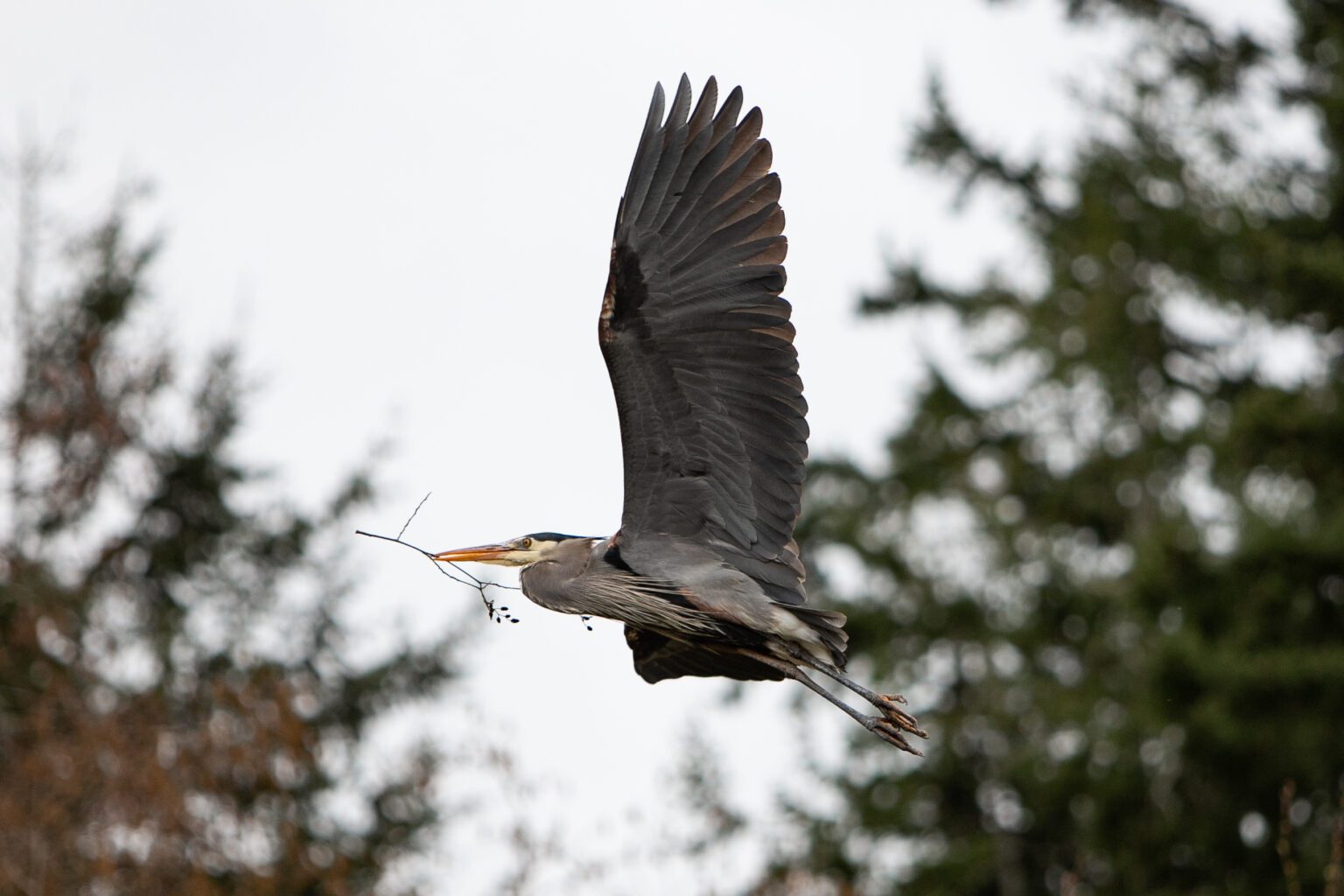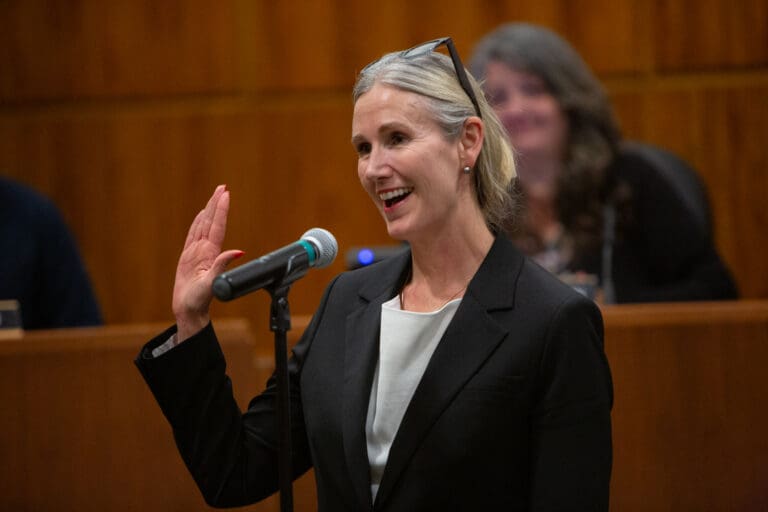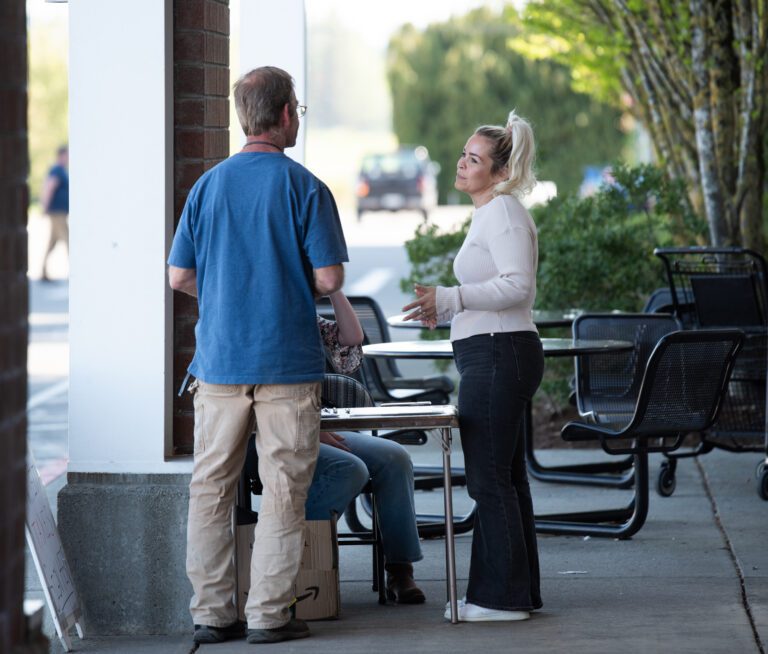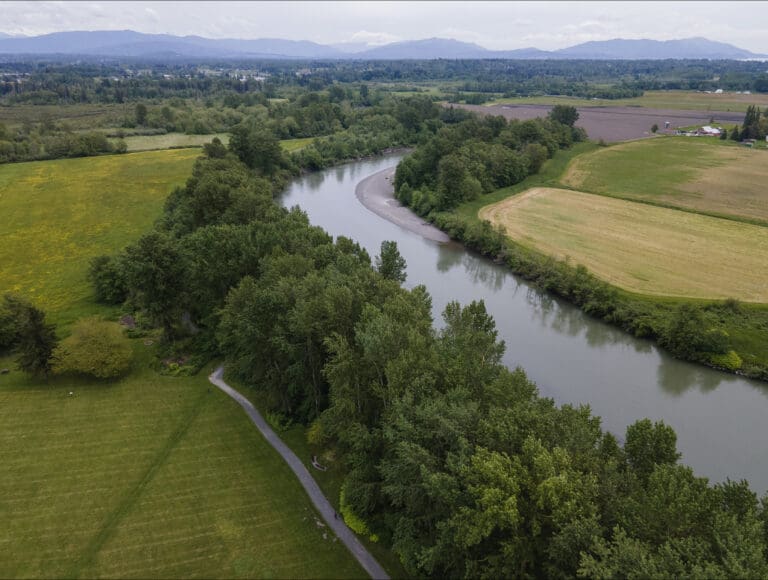The City of Bellingham’s $768,000, 1.43-acre land purchase preserving the Post Point colony closes Tuesday evening, guaranteeing new protection zones for the city’s last great blue heron nesting site.
The Bellingham City Council unanimously approved the purchase in March.
The land, adjacent to another city-owned property, will help provide a major buffer zone around the colony’s nests, protecting it from development and residential activity.
“With those two properties, we are going to preserve, basically, the roosting area for [a] great blue heron colony that’s been at this site for a considerable period of time,” Bellingham Mayor Seth Fleetwood told the council during a March 28 meeting.
Herons have nested in the colony for more than 20 years, with the first fledglings emerging in 2000. Since then, the heronry has grown significantly, hatching almost 1,000 fledglings as more and more birds return each season.
“The colony did grow substantially in the last three or four years,” said Ann Eissinger, who conducted monitoring studies of the colony for the city for almost 20 years.
Last year was one of the most successful in the colony’s history, with 45 active nests and 95 fledglings.
“[Last year saw] the highest number of active nests in the history of the colony,” according to Eissinger’s 2021 monitoring report. “The heron’s return and successful productivity are testament to the heron’s high site fidelity and resilience in this urban environment.”
The heron colony has grown significantly in recent years. In 2013, Eissinger’s monitoring reports identified only 17 active nests and 40 fledglings.
Commissioned by the city, Eissinger wrote the first management plan for the heronry in 2003, and recommended a minimum of a 250-foot buffer zone to protect the birds. In 2019, her updated management plan recommended a 197-foot year-round buffer zone.
This purchase “greatly expands protection, largely fulfilling the recommended 197-foot year-round buffer,” according to Analiese Burns, the city’s habitat and restoration manager.
But there’s no guarantee it will be there forever.
A conservation easement, which was attached to the sale, will protect the hillside as long as the herons nest, and will be managed by the Whatcom Land Trust (WLT), which contributed around $100,000 for the land purchase.
The conservation easement was put in place to protect the site from future development.
“It’s basically a deed restriction that can be placed on a property in order to protect the conservation values,” said Alex Jeffers, WLT’s conservation manager. “It essentially ensures that five years from now, if we have a different city administration or a different city council, and they decide to say, ‘The herons are still nesting there but we’d rather sell this property and have it be used for housing,’ this protects against that.”
The easement is unusual, though, because it is not written in perpetuity, meaning the easement can be terminated if the herons fail to successfully nest in the colony for three years.
Jeffers said citizens were concerned the easement may end up protecting empty land if the herons abandon the colony, so the trust opted to make it not in perpetuity.
“When we were going through this process, [some] people said ‘what if the herons leave on their own?’” Jeffers said. “This is something that happens with herons. Herons will move, and so the easement has a pretty robust set of requirements that, if the herons leave and the city can document that there haven’t been any herons there for a certain number of years … the easement could then be sort of sunsetted.”
When asked if the herons might move in the future, Jeffers said, “it’s possible.”
Eissinger said a conservation easement that is not in perpetuity would only make sense if the city anticipates the herons leaving.
Changing habitats and environmental challenges, including last summer’s extreme heatwave, could push the herons out. Eissinger said extreme weather events, including last summer’s heatwave and recent, strong wind storms “are likely to have an impact on the heron colonies in the region.”
There is hope the birds will continue to use the colony for decades to come.
Heron colonies have been known to roost in one spot for years, with some heronries existing for over a century. The Stanley Park heron colony in Vancouver, British Columbia, has been in the same park since 1921, and the Samish Island colony existed for almost a century before it was abandoned in 2017.
The Bellingham heronry’s continued growth, though, is promising for the longevity of the colony.
“The success of the colony has been relatively good,” Eissinger’s 2019 management report said. It “demonstrates the resilience of the colony.”
This story was updated 12:55 p.m. on June 1 to clarify the size of the buffer zone and the number of nests over the years.




